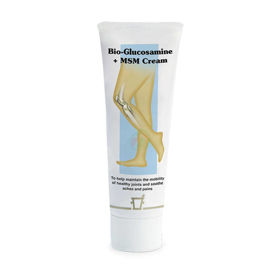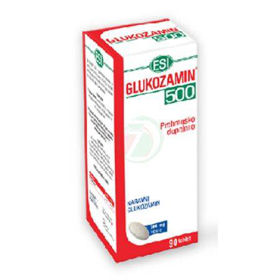Osteoarthrosis (osteoarthritis, arthrosis, degenerative arthritis) is a chronic joint disease characterized by degeneration of joint cartilage and surrounding bone, causing pain and stiff joints.
OSTEOARTHRITIS: General | Causes | Symptoms | Treatment | Questions and Answers | Sources/references
Osteoarthrosis is the most common disease of the joints, affecting most people at least partially at 70. Men and women are affected equally, but the disease appears earlier in men. It also occurs in almost all vertebrates - fish, amphibians, and birds.
It develops in animals that live in water, e.g. dolphins and whales; in animals that hang upside down, e.g. in bats, however, it does not occur. Because the disease is so widespread in the animal world, some experts believe it evolved as a way to repair cartilage.
Image: Women are more likely to suffer from osteoarthritis.

Osteoarthrosis is accompanied by widespread errors, e.g., that it is an inevitable part of aging, just like gray hair and wrinkled skin, that it does not cause severe disability, and that the treatment is not practical. Although more common with age, the cause is not just the simple wear and tear of aging. Many patients with this disease, especially younger ones, have little or no problems, and in some older adults, it causes severe disability.
Causes
The friction in the joints is usually so small that they wear out only if they are excessively loaded or damaged. Osteoarthritis most likely begins with damage to those cells that form the components of cartilage tissue, i.e., collagen (tough, fibrous protein of connective tissue) and proteoglycans (substances that provide elasticity to cartilage).
The next stage is when the cartilage grows excessively, thins, and cracks appear on the surface. Cavities form in the bone tissue under the cartilage, which weakens the bone. The bone grows excessively at the edges of the joint, and outgrowths (osteophytes) are formed, which can be seen and felt. The growths prevent the normal functioning of the joints and cause pain.
The smooth, slippery surface of the cartilage becomes rough and porous, so smooth movement in the joint is no longer possible. The function of all components of the joint - bones, joint sheath (tissue surrounding the joint), synovium (inner layer of the joint sheath), ligaments, and cartilage - fails in various ways and the joint changes.
Image: Osteoarthritis causes severe disability in some older adults.
.jpg)
Osteoarthrosis is divided into primary (idiopathic), when the cause is unknown, and secondary, when another underlying disease causes it, e.g., Paget's disease, infection, deformity, injury, or excessive joint loading.
It often affects people who repeatedly strain certain joints excessively, e.g., foundries, miners, and bus drivers. However, the risk of developing the disease is no greater for trained long-distance runners. One of the main factors for the onset of the disease is probably obesity, but the evidence is not yet reliable.
Symptoms
Symptoms of osteoarthritis can vary depending on the affected joint. Joint pain is one of the most common symptoms of osteoarthritis. The pain is often worse after putting stress on the joint, such as walking or lifting objects, and may improve with rest. Osteoarthritis can cause stiffness and limited mobility of the affected joint, making it difficult to perform daily activities.
Video content: Understanding osteoarthritis.

In some cases, swelling may occur around the affected joint, resulting from inflammation or fluid accumulation in the joint. Spasms may occur in the affected joint, which can cause additional discomfort. As osteoarthritis progresses, the joint can deform, leading to visible changes in the structure of the joint. Pain, limited mobility, or joint deformation may cause a limp when walking.
Treatment
Physical therapy, which may include heat treatment, is often helpful. Against pain in the fingers e.g., they recommend warm or hot compresses or paraffin baths, i.e., soaking the hand in hot paraffin wax heated to a temperature of 45 to 50 °C. Splints and protective bandages protect joints during painful activities. Osteoarthritic defects of the cervical spine are helped by massage performed by a qualified physiotherapist, traction, and deep heat treatment with diathermy or ultrasound.
Medications are the least important part of the overall treatment. Usually, only an analgesic, e.g., Paracetamol, is needed. Pain and swelling are also alleviated by a non-steroidal anti-inflammatory drug, e.g., acetylsalicylic acid (Aspirin) or ibuprofen. If the joint suddenly becomes inflamed, swollen, and painful, the doctor may inject corticosteroids directly into the joint. This brings only a short-term improvement.
Surgery is considered when the problems are not improved by any other treatment method. Some joints can be replaced with artificial ones, e.g., hip or knee; the replacement is usually successful, mobility is almost always improved, and pain is dramatically reduced. When the disease progresses so far that the function of the joint is limited, it is worth considering replacing the joint.
Image: Specific exercises sometimes help with spinal osteoarthritis.

Painful joints should be rested, although immobilizing the affected joints worsens osteoarthritis rather than improves it. Using excessively soft chairs, armchairs, mattresses, and car seats worsens the problem, so experts recommend chairs with a flat back, hard mattresses, or bedboards. Specific exercises sometimes help with spinal osteoarthritis; when the problems are severe, the doctor may prescribe a back brace. It is essential that the patient continues with daily activities and maintains an active, independent role in the family and at work.
Questions and answers
What causes osteoarthritis?
Osteoarthritis occurs when the cartilage that cushions the ends of the bones in your joints gradually breaks down. Eventually, if the cartilage wears down completely, the bone will rub against the bone. Factors that can increase the risk of osteoarthritis include age, gender, obesity, joint injuries, repetitive strain on the joints, genetics, bone deformities, and certain metabolic diseases[1].
How do we recognize osteoarthritis?
Signs and symptoms include:
- pain
- stiffness
- sensitivity
- loss of flexibility
- creaking sensation
- swelling[1]
Who most often gets osteoarthritis?
Women are more likely to develop osteoarthritis than men, especially after age 50[2].
Is osteoarthritis curable?
There is no cure for osteoarthritis, but the condition does not necessarily get worse over time. There are several treatments available to help relieve symptoms. The main medications to treat symptoms include lifestyle measures[3].
Sources and references
Extensive health manual for home use, Youth Book Publishing House
- Osteoarthritis - https://www.mayoclinic.org
- Osteoarthritis - https://www.cdc.gov
- Osteoarthritis - https://www.nhs.uk












 Facebook
Facebook
 Instagram
Instagram
 info@moja-lekarna.com
info@moja-lekarna.com

